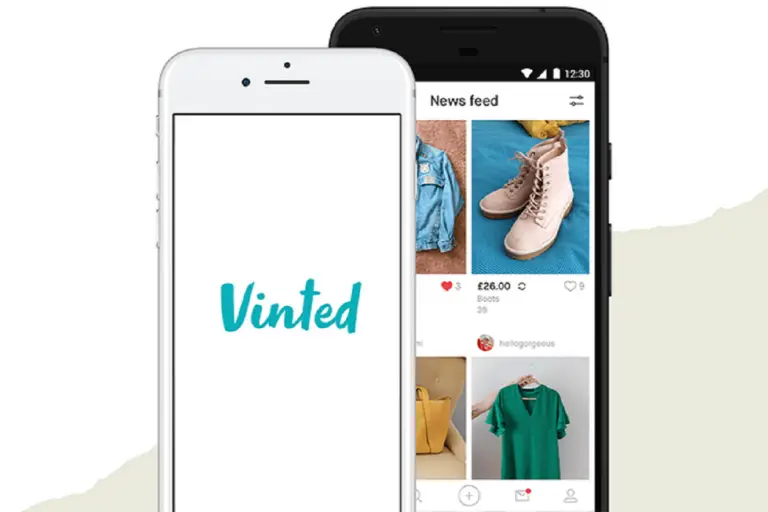How does Instacart make money: The Instacart Business Model
Instacart has undoubtedly experienced some significant growth over the last couple of years. This service, one of the biggest grocery delivery apps, is an interesting case. As users continue to download grocery apps at a record pace, Instacart draws in new users and workers.
How exactly does Instacart make money, and what is the Instacart business model canvas? How is Instacart revenue made? The key is in multiple streams of income.
What is Instacart?
Instacart is known as a grocery delivery service and also offers pickup service from local grocery stores. Such services allow users to shop for groceries online, usually through an app or website, and then arrange for pick-up or delivery based on their needs. Instacart’s business model is the arrangement of shopping and deliveries.

The grocery delivery company has partnered with over 300 retailers across the United States and Canada to deliver groceries. Many of these retailers are large, national chains, such as Walmart, ALDI, Target, and CVS Pharmacy. Also, smaller, more regional chains have partnered with Instacart, such as Stater Bros. in California.
Instacart does more than groceries, however. Big Lots, Bed Bath & Beyond, Staples, and Sephora have also partnered with Instacart. While Instacart has gone beyond strict groceries, that continues to drive downloads of the app and website visits. All of this helps build Instacart’s revenue.
How Does Instacart Work?
Users place their orders through the Instacart website or app. From there, users choose to pick their orders up at their store location selected or get their items delivered, usually same day delivery.
Once the order goes through, a personal shopper, an Instacart contractor, will shop on behalf of the user and then arrange for pick-up or delivery, based on the user’s preference. Instacart offers same day delivery.
For example, if a user wants to do curb-side or in-store pick-up with select retailers, the personal shopper will deposit the item in an appropriate place as they wait for pick-up.
Users can then use the app to notify the personal shopper they have arrived, and the shopping is then complete.
A personal shopper will make their way toward the users’ home address and deliver the items for delivery. Users are then encouraged to rate the personal shopper and overall experience.
Positive experiences with Instacart’s shoppers factor into the Instacart business model. What is essential is that the shopping process offers full communication between the user and the personal shopper throughout the process. Such communication includes convenience features such as contact delivery with a “Leave at my door option.”
Additionally, users can communicate with the personal shopper to track their orders. Personal shoppers can contact the user if stores are sold out of items to ask for alternatives.
How was Instacart Started?
Instacart was started in San Francisco around 2012 by Apoorva Mehta, Max Mullen, and Brandon Leonardo. Currently, Fidji Simo holds the position of CEO of the company. Mehta was born in India in 1983 and grew up in Canada. He graduated from the University of Waterloo in 2005 with an engineering degree.

After working as a design engineer at BlackBerry and Qualcomm, he joined Amazon in 2008. While there, he helped develop the retailer’s fulfillment system as a supply-chain engineer. But after a few years, he felt bored with his work and decided to seek out new challenges. He quit his job, moved to San Francisco, and began trying his hand at entrepreneurship in 2010.
Mehta came out with around twenty different product concepts in the following year, including Groupon for Food and a Social Network for Lawyers, but none really took off. He realized that he needed to solve a problem he really cared about to start a company.
He did care about solving the pain of grocery shopping. Mehta’s original idea for Instacart, the grocery delivery app, came from his childhood experience of going grocery shopping when he was young.
He grew up in Canada, where winters were cold, and he hated using public transportation for grocery shopping.
Grocery shopping is one of those things people never think about until it becomes a hassle. It isn’t just the time spent going to the store; it’s also the time spent waiting in lines, dealing with crowds, and finding what you want.
Mehta realized that he could solve this problem by leveraging technology. He finally settled on the idea of a personal shopper who could go to the store, purchase what you wanted and deliver it to you.
With this idea, he founded Instacart in late 2011. He was the first customer and shopper and would order groceries using the app, pick them up, and deliver them to himself.
In the early days, Mehta would also help with deliveries by calling an Uber and helping fulfil orders.
He applied to Y combinator, a well known Silicon Valley accelerator but was rejected because the application deadline had passed.
However, Mehta used Instacart to deliver a six-pack of beer to a Y Combinator partner and was quickly accepted into the program. Soon after that, he closed a seed investment round.
The history of Instacart is an interesting one that coincides with a lot of similar moves made by large companies in the early 2010s. Since launching in 2012, Instacart has soared to a valuation of $39 billion, which is a pretty big deal.
How Does Instacart Make Money?
The Instacart revenue model is interesting. Instacart makes money by several streams of revenue working within the app, and these multiple fees and transactions can add to the company’s bottom line.
As of 2020, Instacart’s estimated revenue might be well over a billion dollars through such streams. These primary revenue streams include commissions, delivery fees, a subscription option, and in-app advertising.
Commissions
The commissions Instacart earns are a form of revenue sharing with retail partners. Every time something is sold through Instacart, the company will receive a negotiated percentage of the sale. Unfortunately, these percentages are not readily available and likely vary from retailer to retailer.
This means, however, that some items can often be marked higher to increase the share of the revenue. It’s just a reality of convenience through the app. This part of the Instacart business model results in a great deal of profit but is not the most significant contributor to their bottom line.
Delivery Fees
Every order through Instacart entails service and delivery fees, and these can certainly add up, likely resulting in the bulk of Instacart’s revenue. For example, customers pay delivery fees on Instacart ranging from $3.99 to $9.99 based on several factors.
For example, how busy a location may be can factor into the fee, such as the kind of surge pricing you might see on platforms like Lyft and Uber.
Another way your fee may vary is by the number of items purchased. Lower delivery fees are meant to entice users to make more significant transactions. It may also just come down to an agreement with a retail partner.
If you want to save a little money and still handle your shopping on Instacart, consider the option for pick-up. Generally, delivery fees don’t exist if you have the items delivered, but some retailers may require them.
Other fees may include service fees ranging from 5 to 10 percent, items beyond a certain weight threshold, or bottle deposits and bag fees.
Subscription Option: Instacart Express
Instacart users can make things a little more convenient for a fee. Instacart lets users receive unlimited free deliveries for an annual or monthly fee, though this only applies to orders over $35. It also promises lower service fees.
Instacart Express has a monthly fee of $9.99, whereas an annual plan can save users money by only costing $99 annually.
This option exists for Instacart users who work in frequent volume, so the idea is that other revenue will make up for the lack of delivery fee from the transaction after transaction. The volume of sales from subscribers is one way how Instacart makes money.
In-app Advertisements
Yes, Instacart has advertisements, and those advertisements make the service money. Much like how brands jockey for certain shelf positions in a grocery store, they work to get noticed on Instacart. One way brands can do this is through in-app ads that increase the visibility of their products.
These promotional spots can increase the visibility of their products and include factors such as categories and search terms.
These in-app advertisements build Instacart’s revenue. With an estimated 9.6 million users, companies would find marketing directly to these users very enticing.
Instacart’s Success
The success of Instacart is measured in numbers. On the Instacart website, the company can boast over 500 million products, with over 40,000 retail partners across 5,500+ cities.
The business model works at scale and continues to grow. It is easy to see how Instacart’s revenue can continue to climb with these numbers.
Instacart makes money by having such a variety of options to encourage users to shop on their app for convenience and leveraging multiple revenue streams within the app itself, such as commissions, fees, subscription services, and advertising.
In light of the coronavirus pandemic, people are ordering takeout from restaurants instead of going out for dinner because they don’t want to be exposed to the virus by waiting in line at a restaurant.
Many US and Canadian consumers shifted their shopping patterns during the COVID-19 crisis, resulting in an increase in demand for grocery delivery services like Instacart. In 2020, in just eight weeks, the company’s army grew to nearly half a million people.
Instacart’s Users and Employees
Instacart has 9.6 million users a month and has 500,000 shoppers who deliver orders. It has 10,000 employees.
Instacart’s Revenue
Instacart, being a private company, does not have to make its revenue numbers public. According to data from analytics firm SecondMeasure, during the first two months of COVID-19 panic buying, Instacart delivered more groceries than Walmart across the country. It was second only to Amazon.com at the time.
Instacart’s Funding and Valuation
CrunchBase says Instacart has raised over $2.7 billion in VC funding in 17 funding rounds. Their valuation during this latest round in March 2021 was $39B. Investors included Sequoia Capital, Andreessen Horowitz and Tiger Global Management, Kleiner Perkins, Thrive Capital, and many others.
Final Thoughts
Instacart has been under threat by an increasing number of well-funded competitors. Mehta owns around 10% of the company. Instacart, being a privately held company is under pressure to justify its high valuation and is expected to go public soon. There were news reports that Instacart was entering the grocery business as well.
There’s no doubt that the company has made a significant impact on people’s lives during the pandemic. However, post the pandemic, it would be interesting to see if the company can maintain its market share and fend off competitors or lose some ground to other players.








